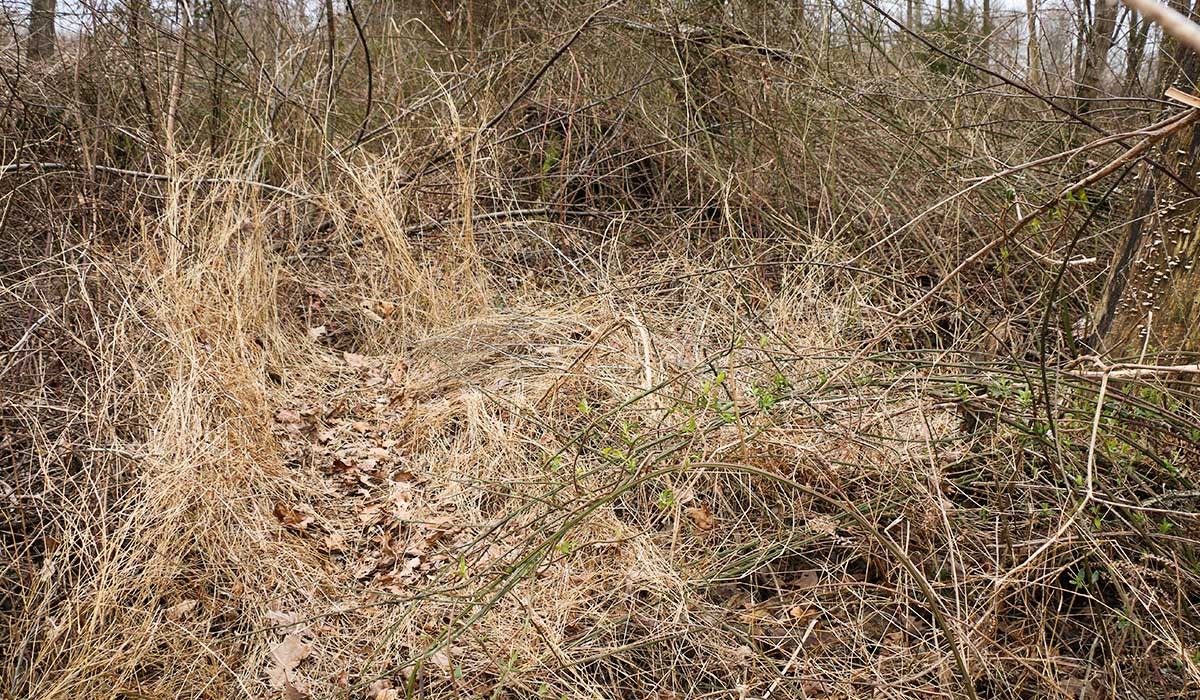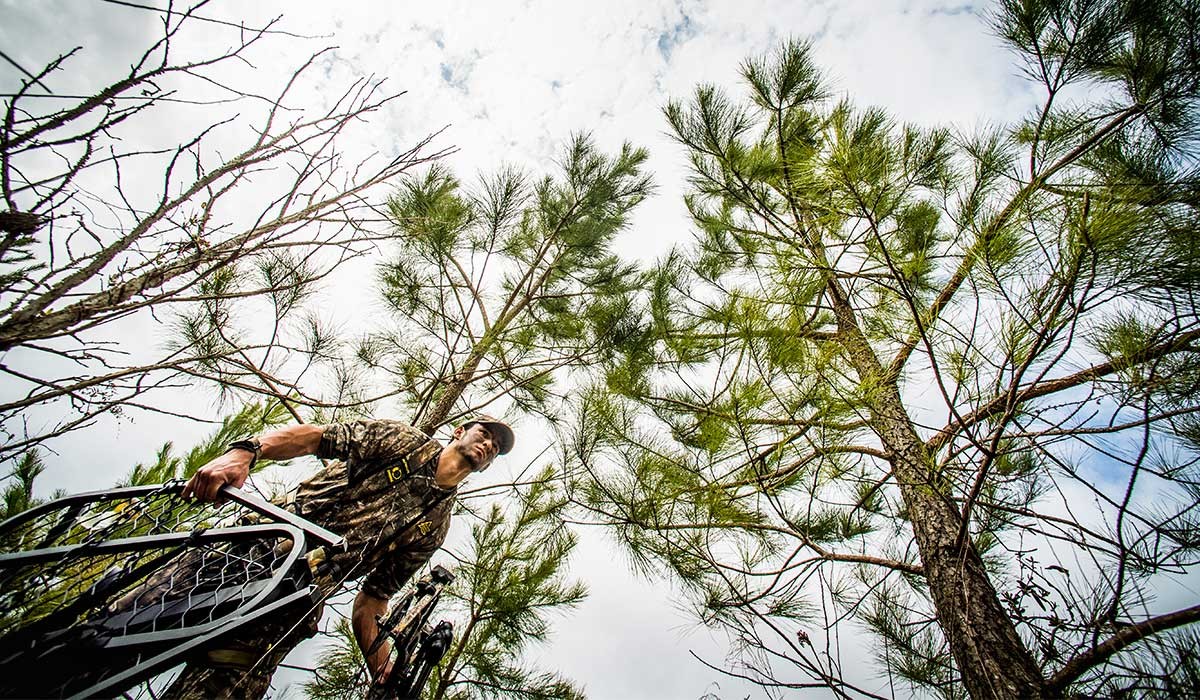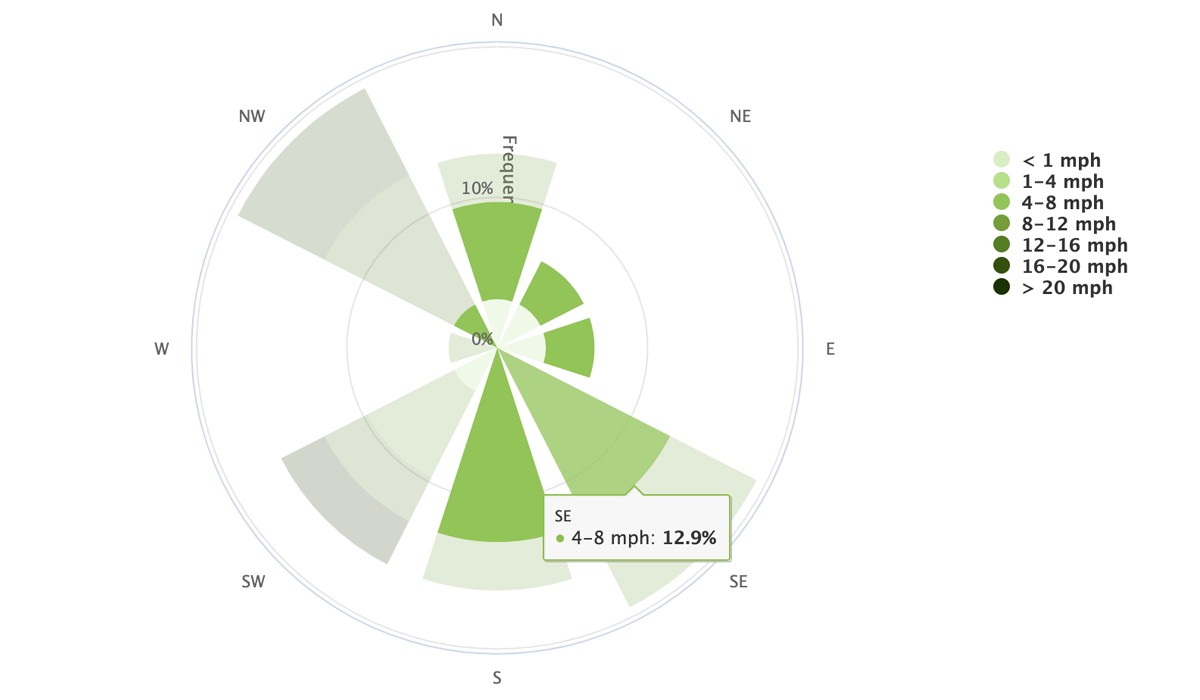Do Deer Travel Into The Wind? Yes, bucks notably move more during windy conditions. SIXT.VN offers seamless travel solutions in Vietnam, and understanding wildlife behavior, including the movement of deer, can enhance your appreciation of the country’s natural landscapes. Explore Vietnam’s travel destinations with detailed travel plans!
1. Understanding How Deer Use Wind: A Comprehensive Guide
How do deer navigate using wind? Wind is crucial for deer, acting as their primary defense mechanism. Deer rely heavily on their sense of smell, even more than sight and hearing, to navigate their environment. SIXT.VN can help you plan trips into Vietnam’s natural areas where you might observe this behavior.
1.1 How Does Wind Affect Deer Movement and Bedding?
Where and how do deer choose to bed and travel based on wind direction? Deer typically bed with the wind at their back, allowing them to monitor downwind and crosswind areas with their eyes while using their nose to detect threats upwind. Wind influences their bedding and travel routes, giving them an advantage when moving from place to place.
 Deer bed with wind at their back, enhancing their awareness of the surroundings
Deer bed with wind at their back, enhancing their awareness of the surroundings
1.2 Are Deer Always Moving Into the Wind?
Do deer always move directly into the wind? No, it’s a common misconception that deer always move directly into the wind. Deer often circle downwind of areas they’re unsure about, using the wind to their advantage whether bedded or on the move.
1.3 How Do Deer Behave in Open Areas?
How do deer manage their safety in wide-open spaces? Even in open areas, deer use the wind to their advantage. When venturing into Vietnam’s stunning natural areas with SIXT.VN, observing these behaviors can enrich your experience.
2. Analyzing Research Studies on Deer Movement in Wind: What Do the Experts Say?
What does scientific research reveal about how deer behave in windy conditions? Research from Penn State University (PSU) and other institutions provides valuable insights into deer behavior concerning wind. These studies help debunk myths and offer a clearer understanding of deer movement patterns.
2.1 What Did Penn State University’s Research Reveal?
What did PSU’s research show about the correlation between wind speed and deer movement? A study by PSU measured the distances traveled by radio-collared whitetails and found that deer moved farther when winds blew between 1-3 mph than when winds were less than 1 mph. The distance remained consistent until winds reached 10+ mph, where it peaked.
2.2 How Did Hunters’ Perceptions Compare to the Research Findings?
What was the common belief among hunters, and how did PSU’s research challenge it? Initially, 90% of hunters surveyed believed deer moved less on windy days. However, PSU’s research indicated that bucks actually increased their daytime travel as wind speeds increased.
2.3 What Were the Specific Findings on Buck Movement at Different Wind Speeds?
How much farther did bucks travel as wind speeds increased, according to the PSU study? Bucks traveled 100 feet per hour with less than 1 mph winds, 115 feet per hour with 1-15 mph winds, and 213 feet per hour with 16-27 mph winds. This data suggests that bucks significantly increase their movement in windy conditions.
2.4 Do All Wildlife Biologists Agree with the PSU Research?
Is there a consensus among wildlife biologists regarding deer movement in windy conditions? While many biologists agree with PSU’s findings, some researchers have observed conflicting data, particularly concerning female deer. However, most experts acknowledge the importance of wind in deer behavior, especially regarding predator detection and scent management.
3. What This Means for Hunting in the Wind: Practical Tips and Insights
How can hunters use the information about deer movement in the wind to their advantage? The research indicates that bucks tend to move more in windy conditions, challenging the common belief that windy days are unfavorable for hunting. Use this information to plan your hunting trips more strategically.
3.1 Why Might Bucks Move More on Windy Days?
What are some potential reasons bucks might move more during windy conditions? Several factors could contribute to increased buck movement on windy days, including inclement weather, improved winding advantages, decreased hunting conditions for predators, and better visual cover due to moving underbrush. These factors can make it advantageous for bucks to be more active.
 Windy days can be a good time to get in the woods
Windy days can be a good time to get in the woods
3.2 What Safety Precautions Should Hunters Take on Windy Days?
What safety measures should hunters prioritize when hunting in windy conditions? It is safer to hunt from the ground than from elevated positions during windy conditions. Always prioritize safety to prevent accidents.
3.3 How Does Wind Direction Influence Deer Behavior and Hunter Strategy?
How can hunters use wind direction to their advantage? Hunters should be downwind from deer when possible to avoid being detected. Consistent wind direction is preferable to variable winds. Wind can also mask slight movements by hunters, making ground hunting more effective.
3.4 What Other Factors Influence Deer Movement?
Besides wind, what other elements affect deer movement patterns? Deer are crepuscular animals, meaning they are most active at dawn and dusk. Hunting pressure and the timing of the rut also significantly influence daytime sightings. These factors should be considered alongside wind conditions.
4. Gathering and Applying Additional Intel for Deer: Advanced Techniques
How can hunters gather more specific information about deer behavior in their hunting areas? While general research is helpful, monitoring specific deer behaviors is crucial. Tools like trail camera data analysis services can provide valuable insights into how individual deer respond to different conditions, including wind.
4.1 How Can Trail Camera Data Analysis Help Hunters?
How does DeerLab’s trail camera data analysis service aid hunters in understanding deer movement? DeerLab analyzes trail camera photos to determine when, where, why, and how deer move in specific hunting locations. This service provides detailed reports on how wind and other conditions impact deer behavior.
4.2 What Information Can DeerLab Provide About Wind Direction and Speed?
What specific insights can DeerLab offer about a buck’s behavior related to wind direction and speed? DeerLab’s profile reports show how deer move in response to different wind directions and speeds, based on your trail camera data. These reports help hunters identify patterns and tendencies specific to individual bucks.
 DeerLab's wind direction and speed report for a particular buck
DeerLab's wind direction and speed report for a particular buck
4.3 What Questions Can DeerLab Help Answer for Hunters?
What questions can DeerLab answer to help hunters refine their strategies? DeerLab can help answer questions such as: Does this buck have certain tendencies regarding wind directions and speeds? Does the buck move more with a particular wind direction? How does the buck move when there is not much wind, or when the wind is strong? How does he move during hunting hours, and is his movement different during daytime and nighttime?
4.4 Why Is Individual Buck Data More Valuable Than General Deer Studies?
Why is it essential to analyze data specific to individual deer rather than relying on general studies? Analyzing individual buck data allows hunters to understand the unique behaviors of specific animals in their hunting area. This personalized information is more valuable than general studies, which may not accurately reflect local conditions and individual animal habits.
5. Planning Your Trip to Vietnam with SIXT.VN: Combining Nature and Convenience
How can SIXT.VN help you plan a trip that combines wildlife observation with convenient travel solutions? SIXT.VN offers a range of services to make your trip to Vietnam seamless, including airport transfers, hotel bookings, and tours to natural areas where you can observe deer and other wildlife.
5.1 Tailored Travel Plans
How does SIXT.VN assist in creating customized travel plans? We create customized travel plans based on your preferences and schedule, so you can experience Vietnam’s natural beauty with ease. With SIXT.VN, you can explore Vietnam’s hidden gems and famous landmarks without the stress of planning.
5.2 Airport Transfers
What are the benefits of using SIXT.VN for airport transfers? SIXT.VN offers reliable and comfortable airport transfer services, so you can start your adventure without delays. Our drivers will pick you up and drop you off at your hotel, ensuring a hassle-free experience.
5.3 Hotel Booking Services
How can SIXT.VN help you find the perfect accommodation? SIXT.VN provides a variety of hotel choices to fit your budget and preferred location, so you can relax after a day of sightseeing. Choose from our carefully selected hotels to enjoy a comfortable and relaxing stay.
5.4 Tours of Hanoi
What unique tour options does SIXT.VN offer in Hanoi? SIXT.VN offers guided tours to Hanoi’s famous sights, so you can learn about the city’s culture and history. Explore the vibrant streets and historical sites of Hanoi with our experienced local guides.
5.5 Tours to Neighboring Attractions
What attractions near Hanoi can SIXT.VN help you explore? SIXT.VN provides tours to nearby destinations, so you can visit beautiful natural areas and explore Vietnam’s wildlife. You can also easily explore stunning destinations with our dependable transportation services.
6. Understanding Deer Behavior in Different Regions of Vietnam
How does deer behavior vary across different regions of Vietnam? Deer behavior can vary depending on the region due to differences in climate, habitat, and other environmental factors. Understanding these regional differences can enhance your wildlife observation experiences.
6.1 Northern Vietnam
What characterizes deer behavior in northern Vietnam? In northern Vietnam, where the terrain is mountainous and forested, deer may exhibit different movement patterns compared to those in the flatter southern regions. The colder climate can also influence their activity levels.
6.2 Central Vietnam
How does deer behavior differ in central Vietnam? Central Vietnam, with its mix of coastal and mountainous areas, provides diverse habitats for deer. Their behavior may be influenced by both the coastal climate and the mountainous terrain, making their patterns unique.
6.3 Southern Vietnam
What is unique about deer behavior in southern Vietnam? Southern Vietnam, with its tropical climate and lush vegetation, offers abundant food sources for deer. This may lead to different feeding and movement patterns compared to deer in other regions.
7. Practical Tips for Spotting Deer in Vietnam’s Natural Areas
What are some practical tips for spotting deer in their natural habitats in Vietnam? Spotting deer requires patience, observation skills, and an understanding of their behavior. Knowing where and when to look can significantly increase your chances of seeing these elusive animals.
7.1 Best Times to Spot Deer
When are the best times to spot deer in Vietnam? Deer are most active during dawn and dusk, making these the best times to spot them. Plan your excursions accordingly to maximize your chances of seeing them.
7.2 Ideal Locations for Deer Watching
Where are the ideal locations for deer watching in Vietnam? National parks, nature reserves, and forested areas are ideal locations for deer watching. Research specific areas known for deer populations to increase your chances of a sighting.
7.3 How to Approach Deer Habitats
What are the best practices for approaching deer habitats without disturbing them? Approach deer habitats quietly and cautiously. Avoid making loud noises or sudden movements. Use binoculars to observe them from a distance.
7.4 What Equipment to Bring
What equipment should you bring for deer watching? Binoculars, a camera with a zoom lens, and appropriate clothing for the weather are essential. A field guide to local wildlife can also be helpful for identification.
8. Safety and Responsible Wildlife Tourism in Vietnam
What safety measures should tourists take when exploring wildlife areas in Vietnam? Safety and responsible tourism are essential when exploring wildlife areas. Always follow local guidelines, respect wildlife, and avoid disturbing their natural habitats.
8.1 Following Local Guidelines
Why is it important to follow local guidelines in wildlife areas? Local guidelines are in place to protect both tourists and wildlife. Adhering to these guidelines ensures a safe and respectful experience.
8.2 Respecting Wildlife
How can tourists show respect for wildlife in Vietnam? Respect wildlife by observing them from a distance, avoiding feeding them, and not disturbing their habitats. Keep a safe distance to avoid startling or stressing the animals.
8.3 Avoiding Habitat Disturbance
What actions can tourists take to avoid disturbing wildlife habitats? Stay on designated trails, avoid littering, and do not remove any plants or objects from the environment. Minimize your impact on the natural surroundings.
9. The Cultural Significance of Deer in Vietnamese Traditions
What is the cultural significance of deer in Vietnamese traditions and folklore? Deer hold a significant place in Vietnamese culture, often symbolizing longevity, prosperity, and good fortune. Understanding these cultural associations adds depth to your appreciation of these animals.
9.1 Deer as Symbols of Longevity
Why are deer often seen as symbols of longevity in Vietnamese culture? In Vietnamese folklore, deer are often associated with longevity and immortality. They are believed to live long lives and are thus seen as symbols of enduring health and prosperity.
9.2 Deer in Vietnamese Art and Literature
How are deer depicted in Vietnamese art and literature? Deer frequently appear in Vietnamese art and literature, often depicted in serene natural settings. They symbolize harmony, peace, and the beauty of the natural world.
9.3 Deer in Traditional Festivals
Are deer featured in any traditional Vietnamese festivals? While not always directly featured, deer symbolism often appears in traditional festivals, representing good fortune and prosperity for the community.
10. Frequently Asked Questions About Deer Travel
Answering common questions regarding deer and how they travel.
10.1 Do deer move more during the day or night?
Deer are crepuscular animals, meaning they are most active during dawn and dusk.
10.2 How far can deer travel in a day?
Deer can travel several miles in a day, depending on factors like food availability, weather, and breeding season.
10.3 What is the average lifespan of a deer?
The average lifespan of a deer in the wild is typically 6 to 14 years.
10.4 How do deer communicate with each other?
Deer communicate through a variety of methods, including vocalizations, scent marking, and body language.
10.5 What is the primary diet of deer in Vietnam?
Deer in Vietnam primarily feed on grasses, leaves, fruits, and other vegetation found in their natural habitats.
10.6 How do deer adapt to different weather conditions?
Deer adapt to different weather conditions by adjusting their behavior, such as seeking shelter during extreme temperatures or conserving energy during harsh winters.
10.7 Are deer populations in Vietnam threatened?
Some deer species in Vietnam are threatened due to habitat loss and hunting. Conservation efforts are in place to protect these populations.
10.8 What are the main predators of deer in Vietnam?
The main predators of deer in Vietnam include tigers, leopards, and dholes (Asian wild dogs).
10.9 How can I contribute to deer conservation efforts in Vietnam?
You can contribute to deer conservation efforts by supporting local conservation organizations, participating in responsible tourism practices, and advocating for habitat protection.
10.10 What should I do if I encounter a deer while hiking in Vietnam?
If you encounter a deer while hiking, remain calm and observe it from a distance. Avoid approaching or feeding the deer, and allow it to move away on its own.
By understanding deer behavior and utilizing SIXT.VN’s convenient travel solutions, you can enhance your Vietnam adventure, making it both educational and unforgettable. Explore the natural beauty of Vietnam with ease and discover the fascinating wildlife that calls this country home.
Address: 260 Cau Giay, Hanoi, Vietnam
Hotline/Whatsapp: +84 986 244 358
Website: SIXT.VN



